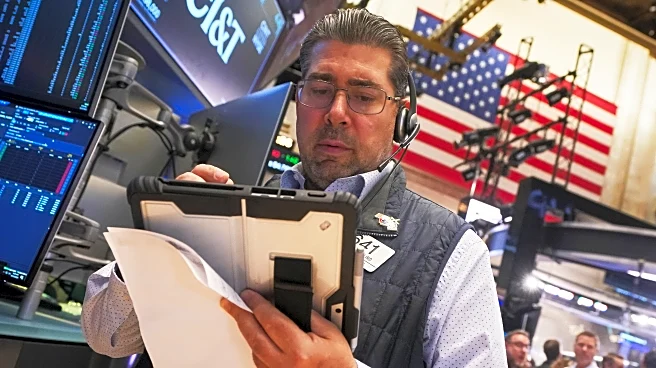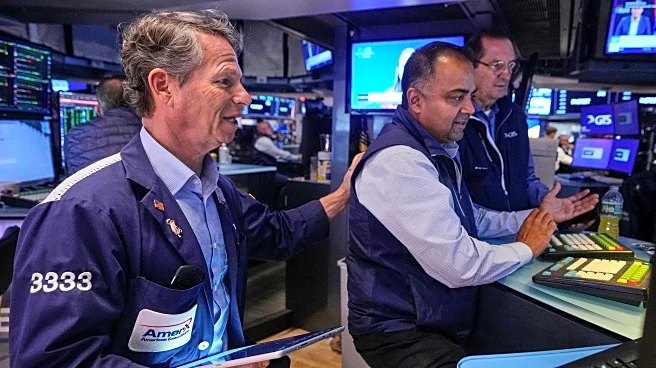What's Happening?
Stocks and gold prices fell on Wednesday as momentum on Wall Street reversed. The Standard & Poor’s 500 index sank 0.5%, while the Dow Jones industrial average dropped 334 points, or 0.7%. Gold fell 1.1%
to $4,065.40 per ounce, following Tuesday’s 5.3% slide. Despite the decline, gold's price is still up 56% for the year. The expectation for Federal Reserve interest rate cuts and concerns about inflation remain, but criticism has grown that gold's price had gone too far, too fast.
Why It's Important?
The decline in stocks and gold prices highlights the volatility and complexity of financial markets. Gold's appeal as a safe-haven asset remains strong, driven by economic uncertainty and geopolitical tensions. The fluctuations in gold prices reflect the impact of macroeconomic factors, such as currency movements and monetary policy, on investor sentiment and market dynamics. Understanding these dynamics is crucial for investors navigating the current economic landscape and making informed decisions about asset allocation.
What's Next?
Gold prices may continue to fluctuate as investors reassess their positions in response to economic and geopolitical developments. The ongoing demand for gold suggests a potential floor for prices, providing stability amid market volatility. Analysts expect macroeconomic and geopolitical uncertainties to remain conducive to further gold demand, supporting higher price targets. Investors will closely monitor these factors to determine the future trajectory of gold prices and adjust their strategies accordingly.
Beyond the Headlines
The recent correction in gold prices highlights the broader implications of economic uncertainty and geopolitical tensions. As investors seek safe-haven assets, gold's role as a hedge against inflation and currency depreciation becomes more significant. The interplay between monetary policy, geopolitical developments, and market sentiment underscores the complexity of global financial markets. Understanding these dynamics is crucial for investors navigating the current economic landscape and making informed decisions about asset allocation.












